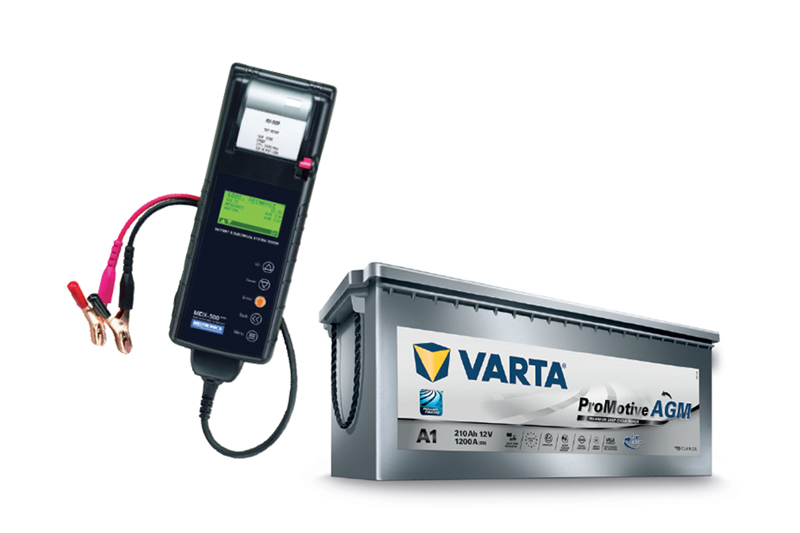
Matt King, Senior Technical Sales Representative UK & Ireland for VARTA, details how good diagnostics always starts with a good battery.
Here is a simple question to begin: how often have you replaced an awkwardly positioned component due to suspected failure, only for the same failure to occur again a few days later?
How did you know that the failure was definitely that component? What other considerations were made before finally condemning the suspected component? Are batteries fitted capable of supplying the power required?
The above questions are things that many workshops must deal with on a daily basis and many will be correct in suspecting a component is at fault due to experience, using diagnostics devices or even just by the on board vehicle diagnostics. How many times has the battery been overlooked as a possible cause?
Many components fitted to trucks have sensitive voltage tolerances for both high and low voltage inputs and, if these are being met either by an overcharging condition or a failing battery, then the component that has been replaced was a waste of time.
The battery itself cannot be interrogated using a vehicle diagnostics computer, but it can be analysed using a good quality battery tester that is suitable for the battery technology that is fitted to the truck. VARTA recommends that truck batteries are tested as part of the regular maintenance routine, but the state of charge checked at least every four weeks, again using a battery tester.
Regular testing can identify master and slave batteries that require balancing to prevent premature failure of a battery in a pair and prevent possible breakdowns. The use of a balance charger will also help here to charge both batteries at the same time and restore them to an equal state, and this can reverse the master/slave scenario.
If the batteries are unbalanced and recovery is not possible (due to higher than normal internal resistance in one battery), both batteries must be replaced as a pair to prevent the same scenario again with a new and an old battery fitted together. If the batteries remain unbalanced for an extended period, this can also affect the battery management system and cause further problems.
As part of a good servicing routine, it is helpful to bear in mind that the best type of battery diagnostics is pre-emptive diagnostics, and to consider what battery conditions found now may lead to failure in the future. This could include things such as:
- Poorly fitted connector clamps
- Low state of charge
- An imbalance between a pair of batteries (master/slave)
- Prolonged low state of charge leading to sulphation/acid stratification
- Overcharging of the battery
Acid stratification through a prolonged low state of charge is one of the biggest causes of battery premature failure and it is very easy to prevent if the correct routine maintenance activity of maintaining charging and regular battery testing is completed.
When completing the routine maintenance activity, always make sure that the battery is fully tested along with a charging system check. This will ensure that the whole vehicle electrical system is functioning correctly to keep components and systems supplied with a stable power supply. Any fluctuation in the supply of power to vehicle components and systems has the potential to cause serious damage and prevent essential systems functioning correctly when needed.
As an example, vehicle safety systems require a stable voltage to maintain accurate function. If there is voltage instability and chatter, this can cause these systems to shut down, either temporarily or, in extreme cases, permanently. This would require potentially expensive component replacements to repair the fault.
In summary, to prevent wasted time during diagnostics, always check the battery first with a good quality battery tester that can test the following:
- Conventional, EFB, and AGM battery technologies
- 12V and 24V systems (N.B. test batteries individually in a 24V system)
It would also be a good time to ensure that the battery fitted is able to meet the power demands required; for example, hotelling trucks with parking coolers fitted are recommended to have AGM batteries fitted due to their deeper depth of discharge capabilities.
Using a conventional battery in this case would cause many components to have low power supply due to the demands of the parking cooler. This would also cause premature failure of the battery due to the demand being too high for the battery capabilities.
If a truck has had any additional components or features added, it is always recommended to reassess if the battery is able to supply the power required by the extra components. In these cases, an upgrade would be recommended.








